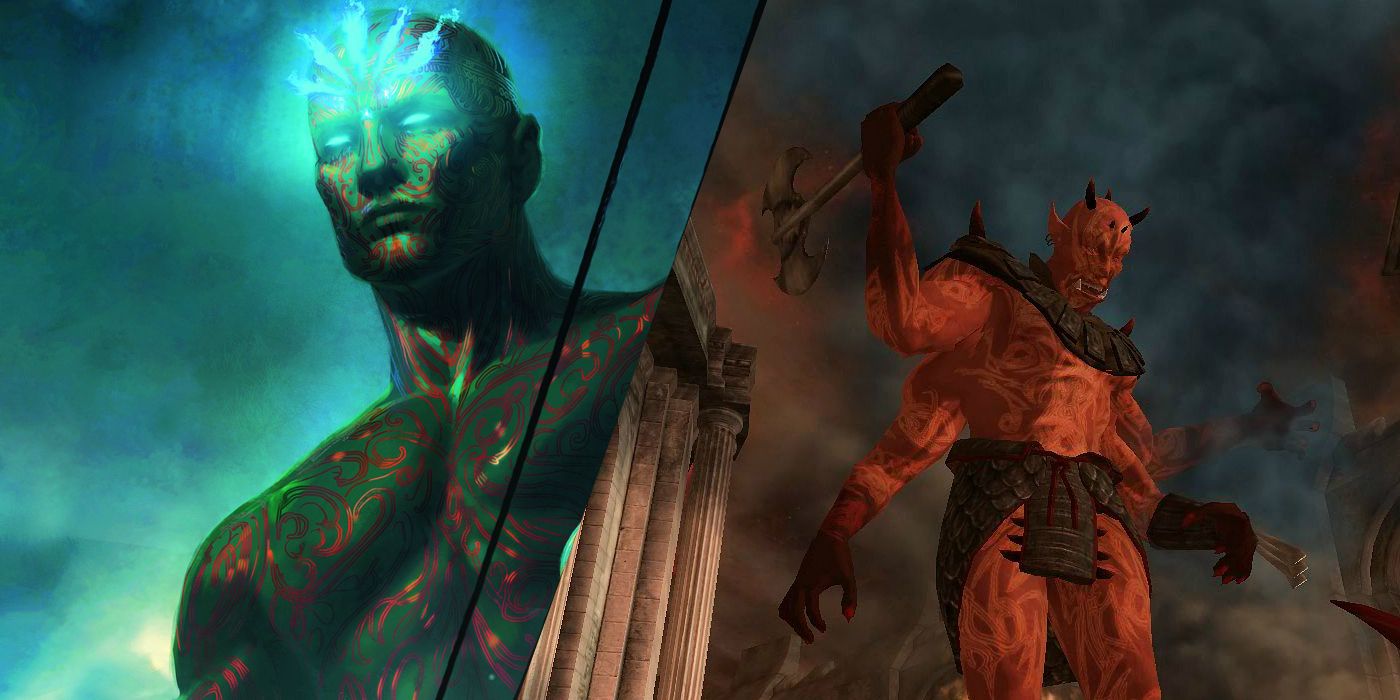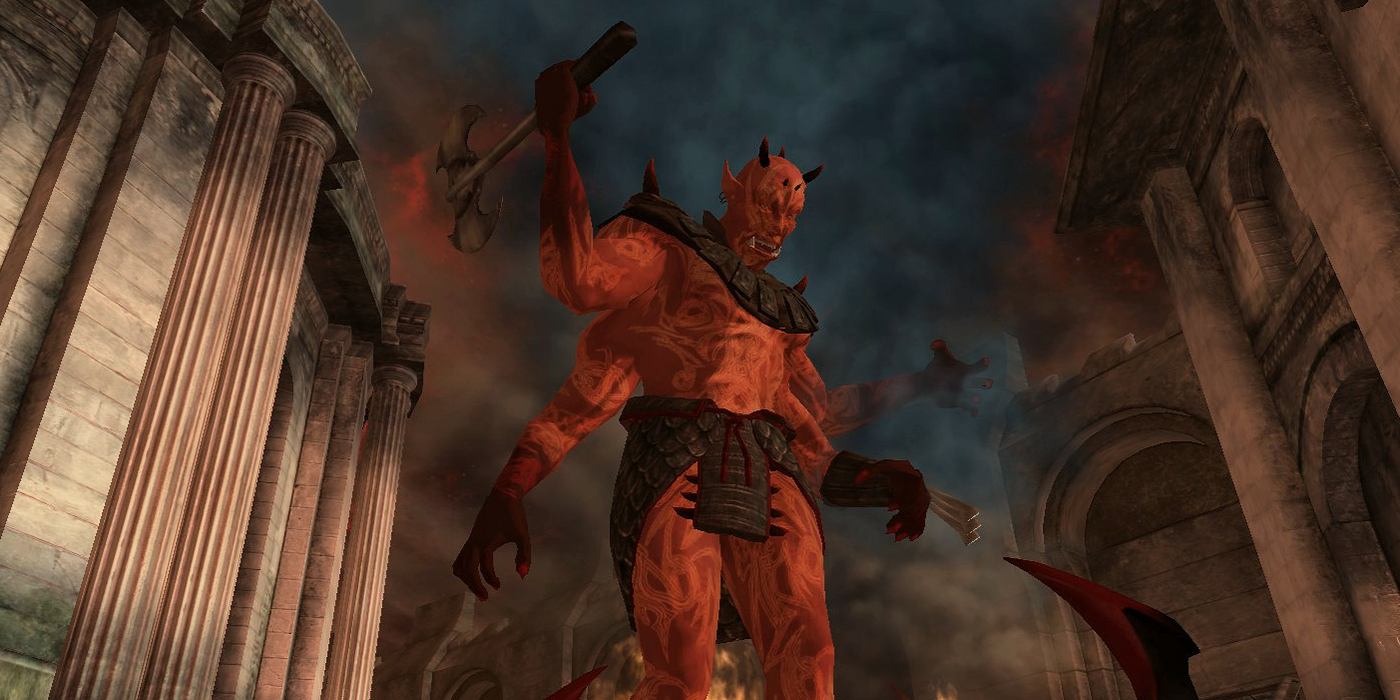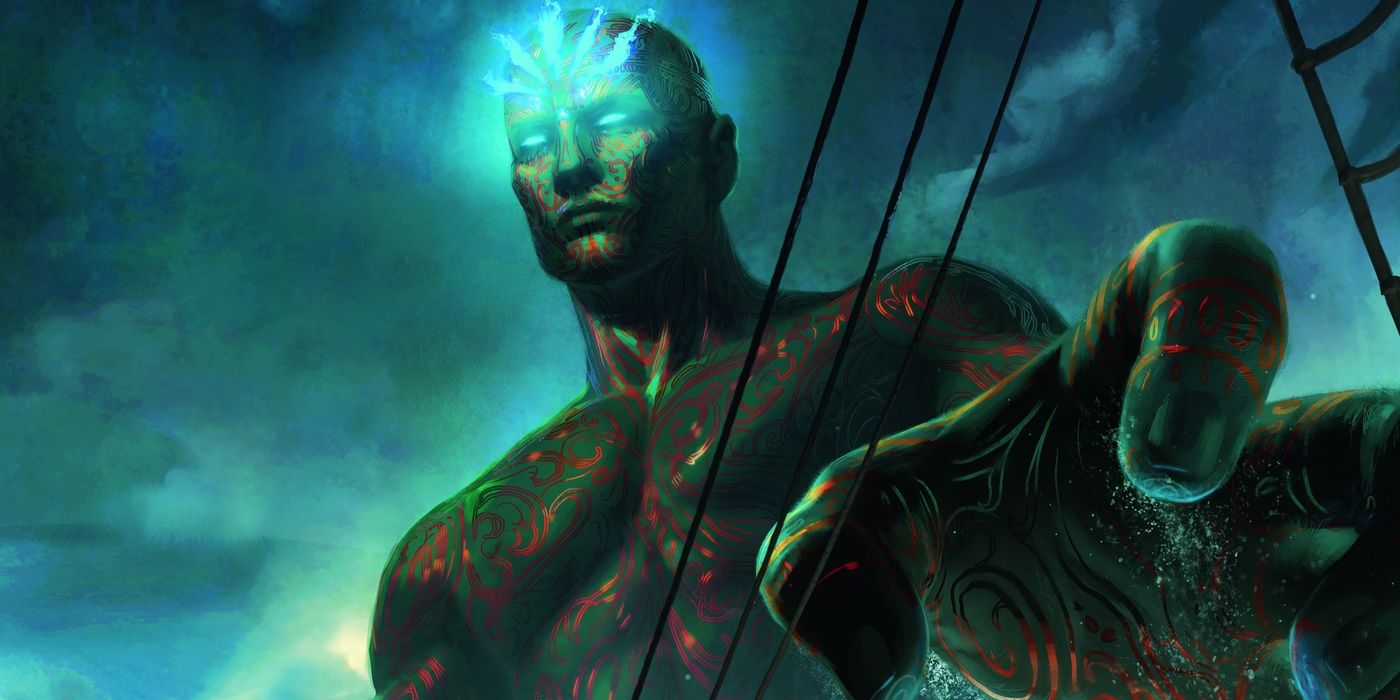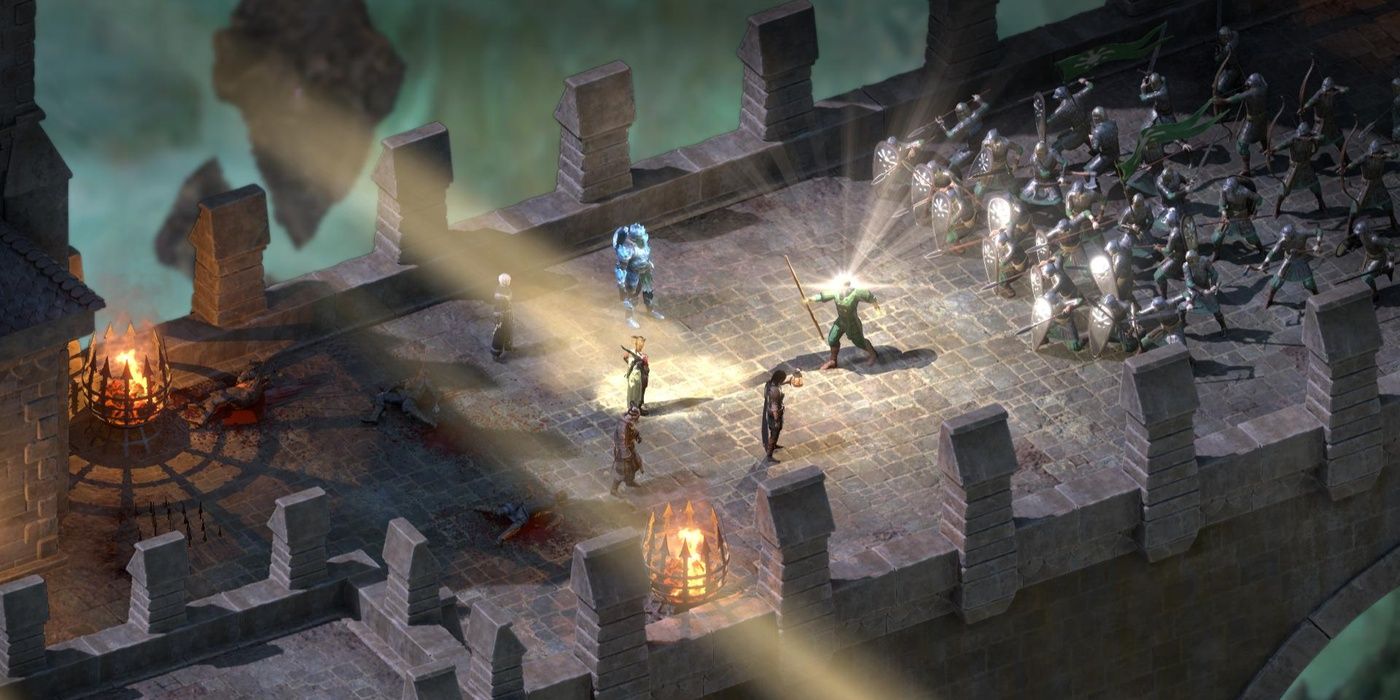This week, Obsidian Entertainment announced its upcoming first-person fantasy RPG Avowed, leading many fans to suspect the developer has set its sights on the exact market left open by Bethesda’s slow development of The Elder Scrolls 6.
Avowed is set in the world of the Pillars of Eternity games, where the god Eothas plays a large role, one with interesting parallels to the demonic "daedric" prince Mehrunes Dagon, a recurring villain and subject of worship in The Elder Scrolls series. With many fans looking to compare the franchises, it’s worth comparing two of the most powerful deities in the lore of these games.
The Elder Scrolls: Mehrunes Dagon
Mehrunes Dagon is the daedric prince of destruction, revolution, energy, change, and ambition. Based on his appearance in The Elder Scrolls 4: Oblivion, he closely resembles classical depictions of the devil, with red skin, fangs, and horns on his head. Mehrunes Dagon also has an extra set of arms and giant stature in his Oblivion appearance, though he has many different manifestations as depicted at his various shrines across The Elder Scrolls games.
In the province of Morrowind, Mehrunes Dagon is known as one of the 4 corners of the House of Troubles along with fellow daedric princes Malacath, Molag Bal, and Sheogorath. They are considered ancestral spirits who led the Veloth the Prophet and the Daedrea-worshiping Chimer to Morrowind. The 4 daedra rebelled against the Tribunal, unleashing strife across the land that eventually resulted in the Chimer being cursed, transforming them into the Dark Elves. To these elves, Mehrunes Dagon remains a symbol of the inhospitable landscape of Morrowind itself, and the hardship their people have endured through the years.
Like all daedric princes, Mehrunes Dagon rules over a plane of Oblivion. Dagon's plane is the Deadlands, a hell-like realm of crumbling towers and pools of lava that the player character raids in Oblivion. Mehrunes Dagon believes that Nirn, the physical realm in The Elder Scrolls, is another plane of Oblivion that’s rightfully his, and he longs to conquer it, and has attempted many times in the past.
Dagon was summoned at the end of the First Era by a vengeful witch to destroy Morrowind’s capital of Mournhold before being banished again. Mehrunes Dagon also features as the villain in The Elder Scrolls spin-off game An Elder Scrolls Legend: Battlespire, where he takes over the tower of the Imperial Battlemages before his defeat by the player character.
During the Oblivion Crisis, Dagon’s cult, the Mythic Dawn, assassinated Emperor Uriel Septim VII, and opened a portal to the Deadlands that destroyed the city of Kvatch. At the end of the crisis the daedric prince was defeated by Akatosh, chief of the Divines, when heir Martin Septim used the Amulet of Kings to merge himself with Akatosh within the walls of the Imperial City, destroying both Mehrunes Dagon and Martin himself.
Despite his defeat in Oblivion, the daedric prince returned to his plane of Oblivion and Mehrunes Dagon appears in Skyrim. Silus Vesuius of the Mythic Dawn asks the player to help summon Dagon, who will then tell the player kill his “pawn” Silus if they truly wish to become his champion.
Avowed: Eothas
In the Pillars of Eternity setting in which Avowed takes place, Eothas is the god of light, rebirth, redemption, and hope, as well as cyclical death through his aspect Gaun, who appears as a farmer with a scythe. His avatar resembles a ginormous green human covered in gilded tattoos, emitting light from his eyes and from a symbol of a rising sun on his forehead.
Just as Mehrunes Dagon is responsible for the Oblivion Crisis, Eothas is behind one of the biggest events in the Pillars of Eternity timeline, The Saint’s War. The Saint’s War took place between the Free Palatinate of Dyrwood and the Divine Kingdom of Readceras, a theocratic dictatorship led by Saint Waidwen, a prophet of Eothas who became his avatar until he was killed by a bomb at the Battle of Halgot Citadel.
Just as Mehrunes Dagon’s followers are called the Mythic Dawn in Oblivion, Eothas’ messengers are called the Dawnstars, though they are angel-like manifestations of Eothas, not his mortal followers, who are called Eothasians. The Dawnstars supposedly visited Waidwen but have not been seen since.
After the Saint’s War, many worshipers of Eothas among the races of Avowed's setting went into hiding, leading to the creations of secret organizations like the Night Market. Some of its members want to rebuild after the events of the war, but others merely seek revenge for the death of their prophet. Unlike Mehrunes Dagon’s worshipers, Eothas’ priests try to exhibit compassion, preaching against liars and cruel behavior. Many believe Eothas himself was killed in the events of the Saint’s War, but events in the Pillars of Eternity games reveal he has in fact returned to the world of Eora at the keep of Caed Nua.
Gods of Revolution
Mehrunes Dagon and Eothas are deities with extremely different aesthetics. The former is a relatively archetypal devil figure, associated with fire, natural disasters, and destruction. The latter, on the other hand, is associated with light and renewal, as well as natural, rather than violent death. However, the fact that both are associated with the symbol of the dawn is telling. In both canons, these deities are associated with coming revolution and cyclical destruction. Eothas leads holy revolution in the Saint's War, and while Dagon's attack on the Imperial City fails it ends the Septim bloodline, birthing a new era.
The symbol of the coming dawn seems to suggest that their success is inevitable one day. As well as revolutionaries, both are founders of nations which play big roles in their worlds, the Divine Kingdom and Morrowind, and in both cases their followers are at least partially severed from the subject of their worship.
Avowed's Eothas is perhaps a slightly more nuanced depiction of the archetype – he is destructive but righteous, as opposed to Mehrunes Dagon who makes his purely destructive intent perfectly clear as demonstrated it in Morrowind and the Imperial City. Dagon's own realm also lies in ruin. Like Eothasians, Mehrunes Dagon’s followers believe they will ascend to a new form of being, the daedra promising that “when I will walk the earth again, the Faithful among you shall receive your reward: to be set above all other mortals forever.”
While Mehrunes Dagon appears as purely malicious, Eothas and his followers are fueled by righteousness, making for a slightly more morally grey world where Eothasians can be well-intentioned, while worshipers of Dagon tend to act for purely selfish reasons. Eothas resembles both Mehrunes Dagon and Akatosh in The Elder Scrolls’ canon in some ways, appearing as both divine and destructive. Waidwen and his sacrifice more closely resembles Martin Septim’s sacrifice to Akatosh in order to defeat Mehrunes Dagon than it resembles Dagon himself. Eothas' full role in Avowed, however, remains to be seen.
Avowed is currently in development for PC and Xbox Series X with no confirmed release date.




